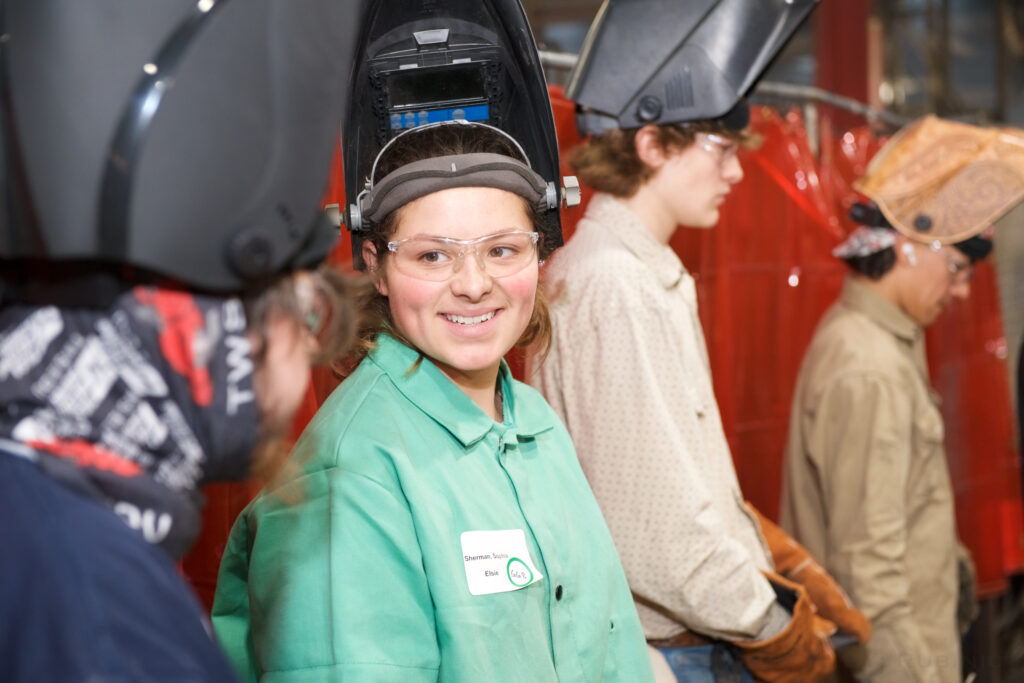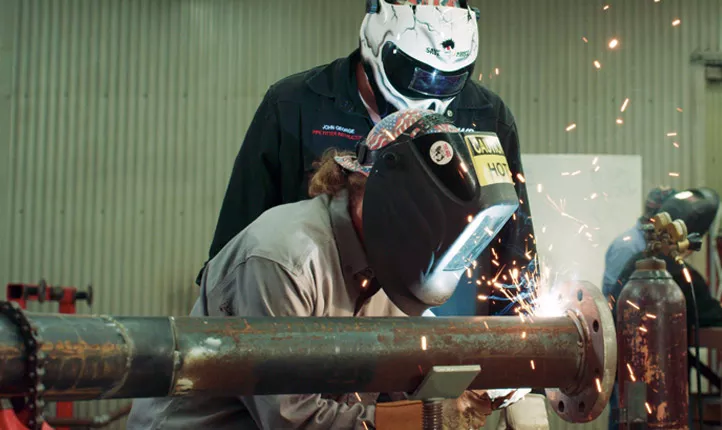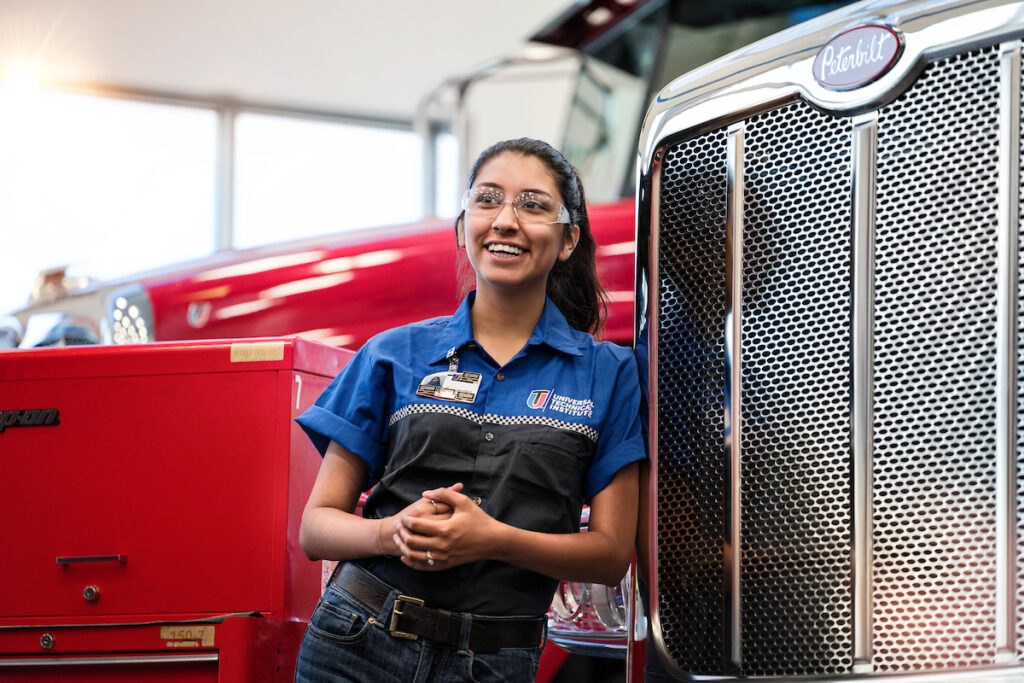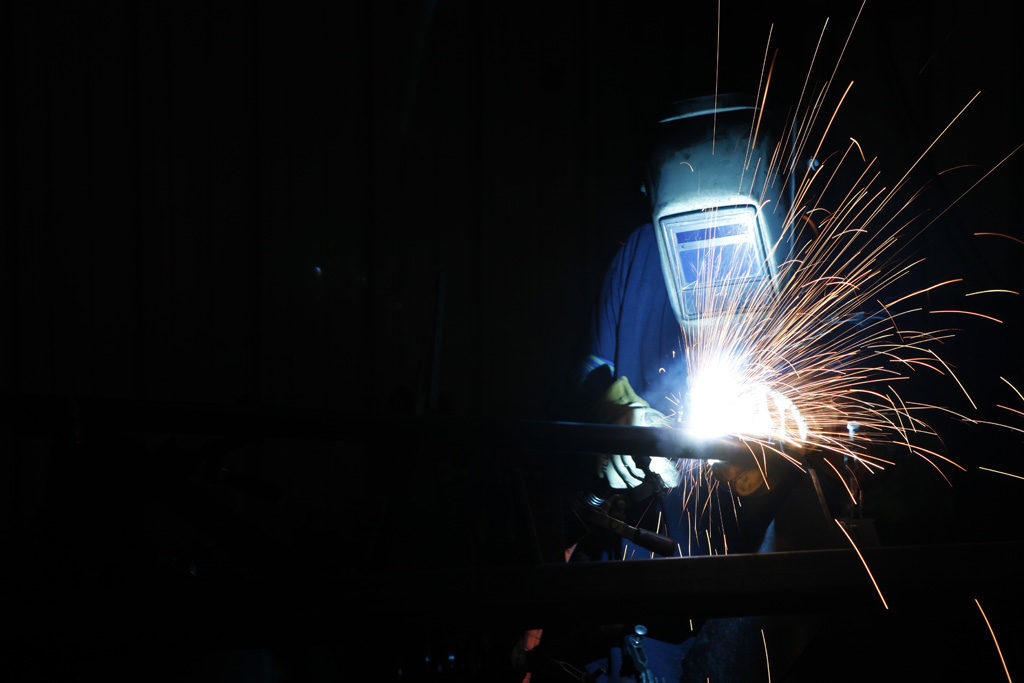Different Types Of Welding
Different Types of Welding
If you’re looking for a career in welding, you may not realize that welding isn’t just one process. While the basic premise is the same—joining metals together—there’s actually more than one way to accomplish that goal. There are a variety of types of welding incorporating different technologies, materials, and styles.
Let’s take a look at the four most common types (and some of their subtypes) of arc welding.
Gas Metal Arc Welding
Gas metal arc welding (GMAW) is a process that creates an electric arc between a consumable electrode and the metal you’re welding to heat it and allow you to fuse it.
GMAW is often referred to as MIG (metal inert gas) welding or MAG (metal active gas) welding, which are the two types of gas metal arc welding. These are distinguished by the type of shield gas used. MIG welding uses inert gases like argon and is best used for materials like aluminum. MAG welding uses active gas, usually a mixture involving carbon dioxide, and was developed for welding steel materials.
Shielded Metal Arc Welding
Shielded metal arc welding (SMAW) is one of the most popular welding processes. Sometimes referred to as “stick welding,” it’s a process that (like the GMAW welding processes) also uses a consumable electrode. It’s a versatile and simple process, which makes it a popular choice for welding a variety of materials, including iron, steel, and aluminum.
Dating back to the 1800s, SMAW is still a manual process today—and it can take a little extra time to get the hang of it.
Flux-cored Arc Welding
Flux-cored arc welding (FCAW or FCA) is an automatic (or semi-automatic) welding process. Developed as an alternative method to SMAW, it doesn’t require the stick electrode used in stick welding and instead uses a consumable tubular electrode.
Some FCAW processes require no shielding gas, while others do. Shielding gases (either inert or active) help protect the weld area from damage caused by oxygen, water vapor, or other contaminants.
Gas Tungsten Arc Welding
Gas tungsten arc welding (GTAW) is different from the FCAW and GMAW in its use of a non-consumable electrode. Also known as tungsten inert gas (TIG) welding, it uses a tungsten electrode rather than wire or tubular electrodes.
While a slower and more complex process than other types of welding, it offers a higher level of control for the welder and can produce higher quality welds. GTAW is often used for welding materials like stainless steel, aluminum, and magnesium.
Submerged Arc Welding
Submerged arc welding (SAW) is unique in its use of granulated flux that covers the arc. The flux serves three important purposes: it protects the weld from contamination from oxygen or water vapor, prevents the spatter and sparks commonly associated with arc welding, and serves as a conduct between the weld and the electrode.
SAW is frequently used for nickel-based alloys and for some types of steel and produces uniform and sound welds.
More on Welding
Let’s Talk Picking the Right Trade School with Universal Technical Institute
Let’s Talk Picking the Right Trade School with Universal Technical Institute: SEASON 5, EPISODE 3 MORE FROM OUR EPISODE ON picking the right career school with universal technical institute Find Your Perfect Training Program At UTI, our mission is to prepare technicians for the careers…
Let’s Talk Women in Welding with Tulsa Welding School
Let’s Talk Women in Welding with Tulsa Welding School: SEASON 5, EPISODE 2 MORE FROM OUR EPISODE ON Women in welding WITH tulsa welding School Contact TWS — Houston, TX Click Here For A Virtual Tour! Location 243A Greens Rd. Houston, TX 77060 Contact tulsa…
Making HERstory: Women in Welding Careers
The world is currently experiencing a shortage of qualified skilled welders as part of the greater “Skilled Trades Gap”. Filling this gap is necessary, as welding impacts many industries and supports the maintenance and growth of infrastructure. With the demand increase in welding career fields,…
Narrowing the Skills Gap: The UTI Way
Sponsored by: The Skills Gap. We’ve been talking about it for years. It’s a real problem in our world today, yet the gap is not narrowing. It’s talked about in many educational circles. At Universal Technical Institute, we are taking a proactive approach as we…
1 Comment
Leave a Reply Cancel reply
- - ADVERTISEMENT - -
Categories
- Alumni Series (13)
- Automotive (57)
- Aviation (15)
- Business (14)
- Business & Arts (18)
- Career College Expositions (8)
- Career Development (96)
- CCC Blog (1)
- CCC Podcast (9)
- College Resource (90)
- College Showcase – Lincoln Tech (6)
- College Showcase – New Jersey (8)
- College Showcase – Pennco Tech (1)
- College Showcase – Universal Technical Institute (2)
- Continuing Education (155)
- Cosmetology (3)
- Counselor Resources (108)
- Criminal Justice (3)
- Dental Assistant (2)
- Education (110)
- Financial Literacy (17)
- Health Sciences (51)
- Heritage Series (3)
- High School Recruitment Series (4)
- Housing Series (10)
- HVAC (8)
- Imagine America Scholarships (12)
- Information Technology (17)
- Massage Therapy (5)
- Mechanical Sciences (109)
- Medical Assistant (12)
- Millennial Student Series (4)
- News (11)
- Nursing (22)
- Online education (13)
- Pandemic Proof Series (4)
- Personal Finance (17)
- Podcast (91)
- Research (11)
- Road Map Series (2)
- Scholarships (12)
- Social Media Series (4)
- Strata Tech (3)
- Student Success (29)
- Study Tips (3)
- Time Managment (1)
- Top 10 (10)
- Trucking (2)
- Uncategorized (14)
- Universal Technical Institute (19)
- Veteran Affairs (8)
- Welding (24)
- Women in Skilled Trades (3)
Tags
- - ADVERTISEMENT - -








I like that you pointed out how there are a variety of types of welding incorporating different technologies, materials, and styles. I was reading a vocational school book yesterday and it was all about how welding works. Welding is actually a pretty important work, and I heard it is widely being offered nowadays, like structural steel welding services for example.